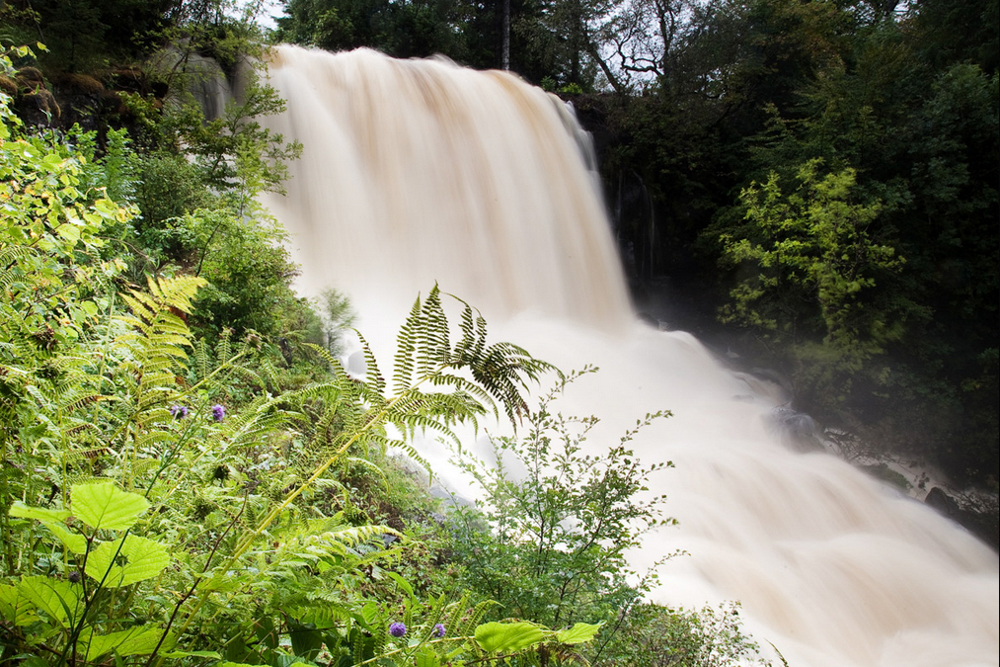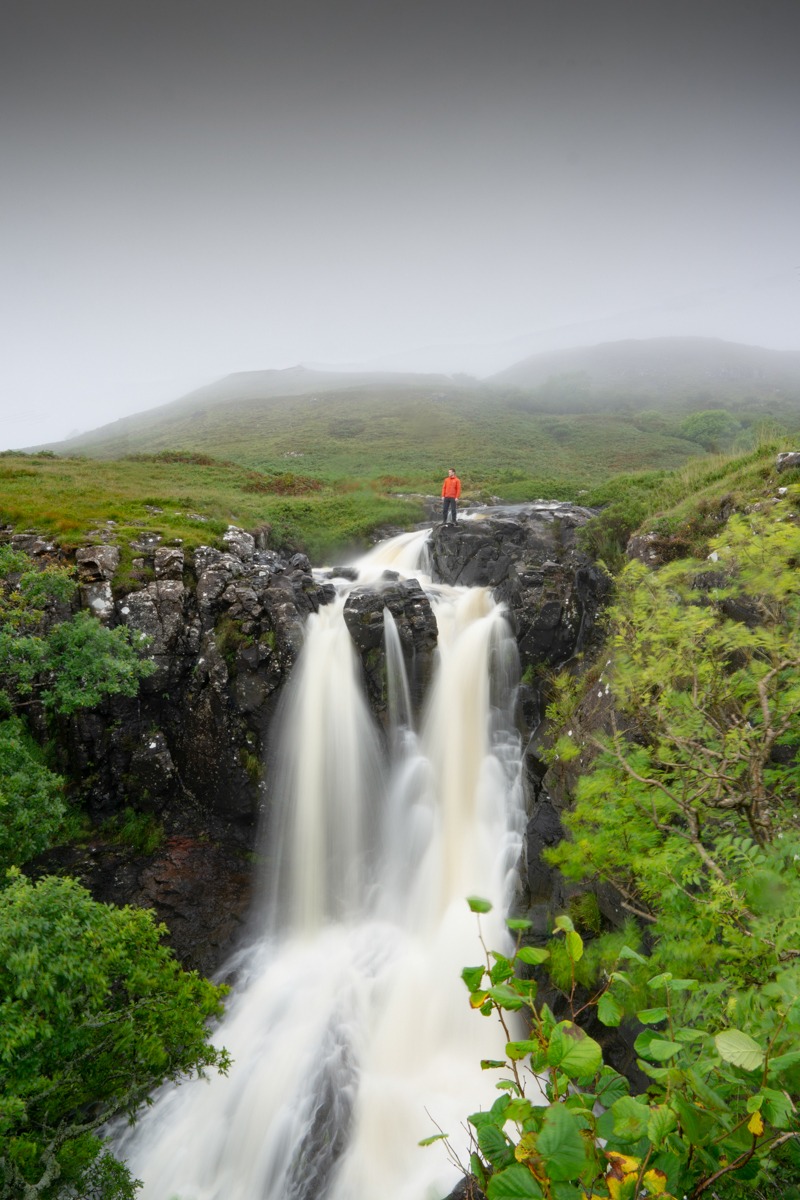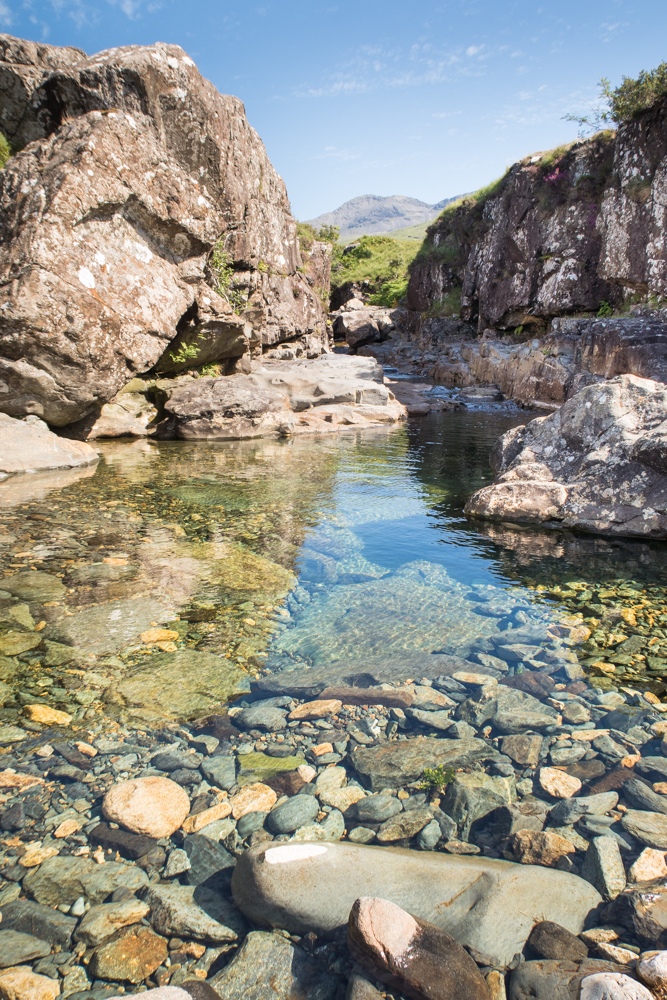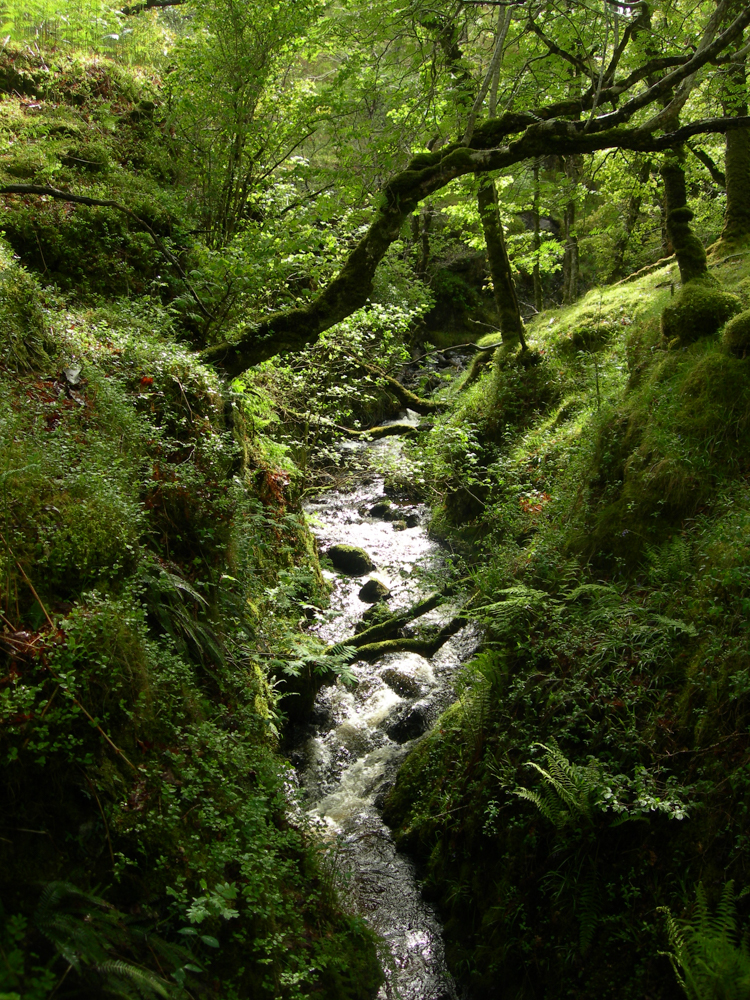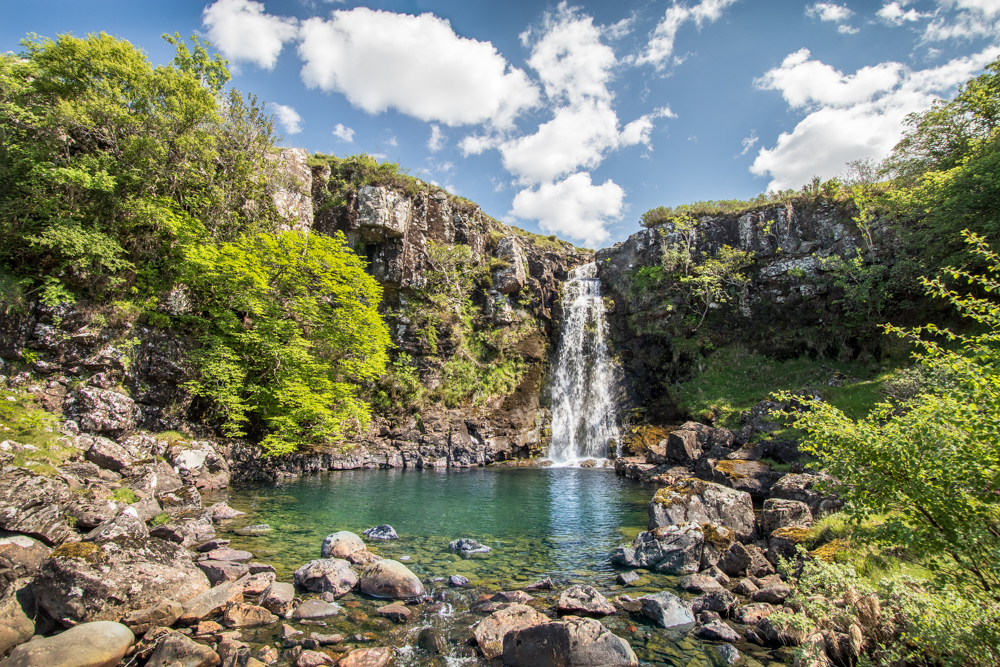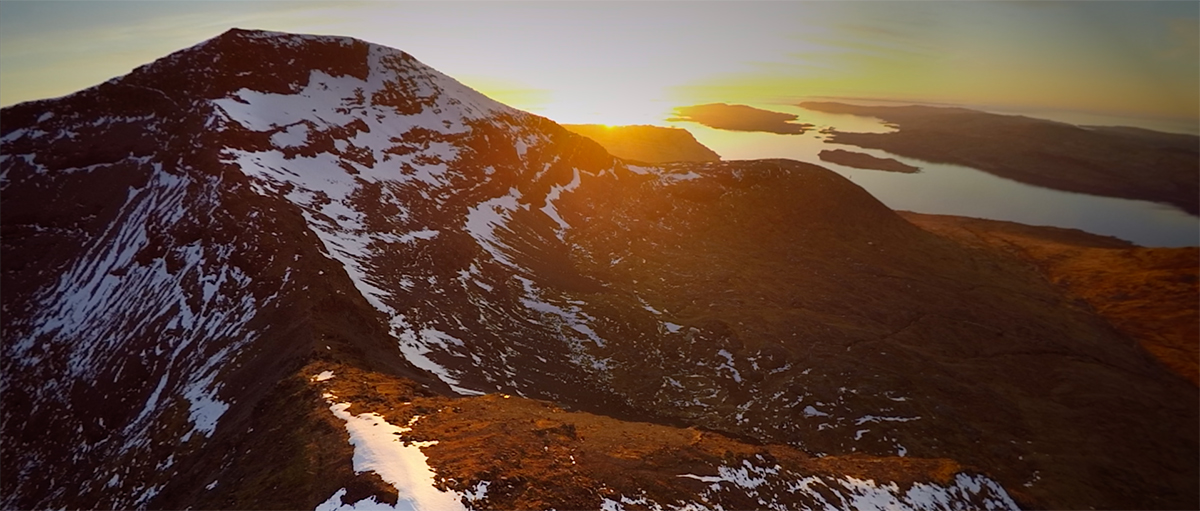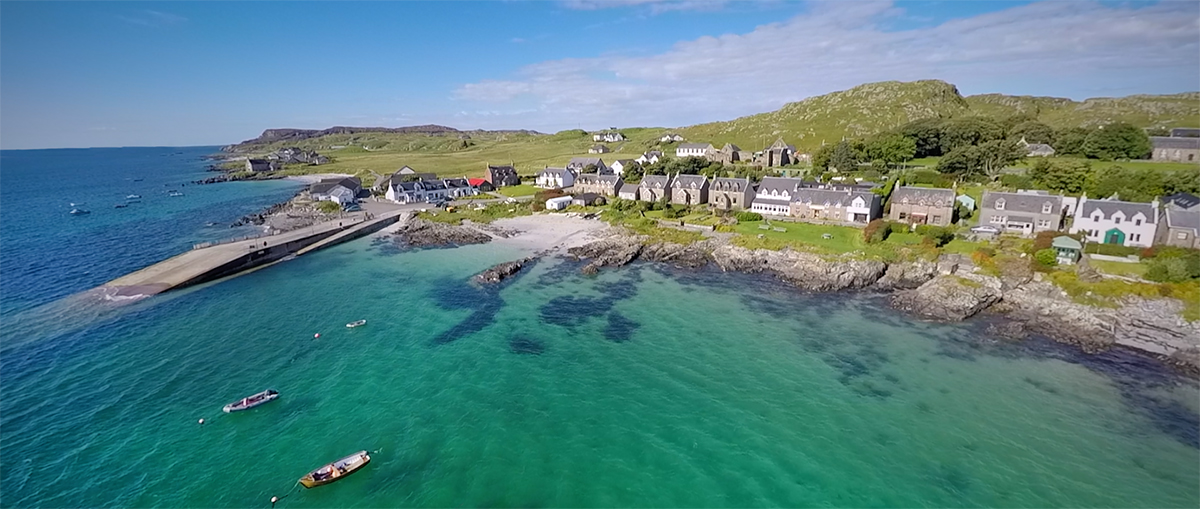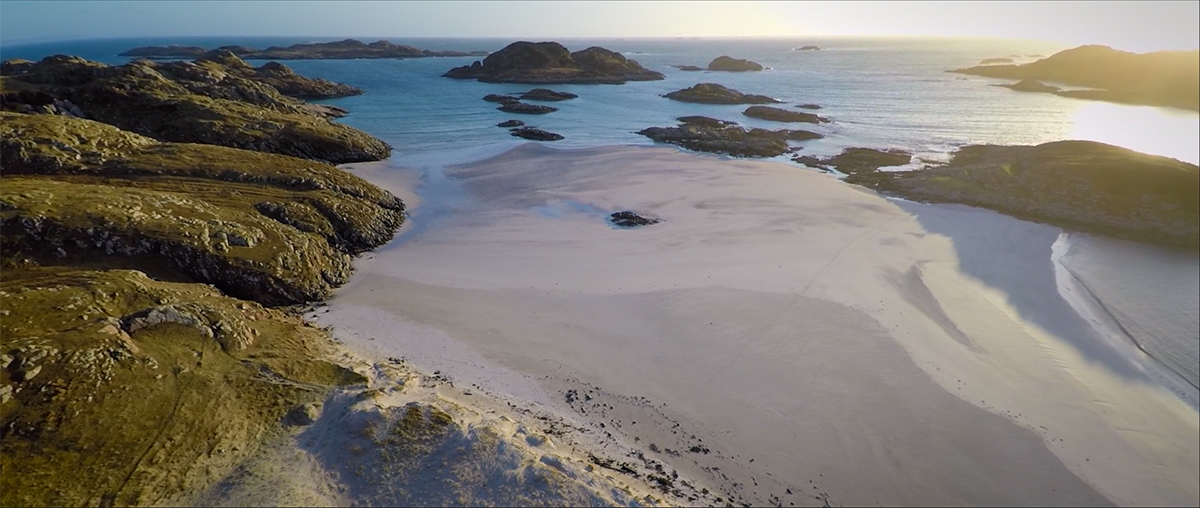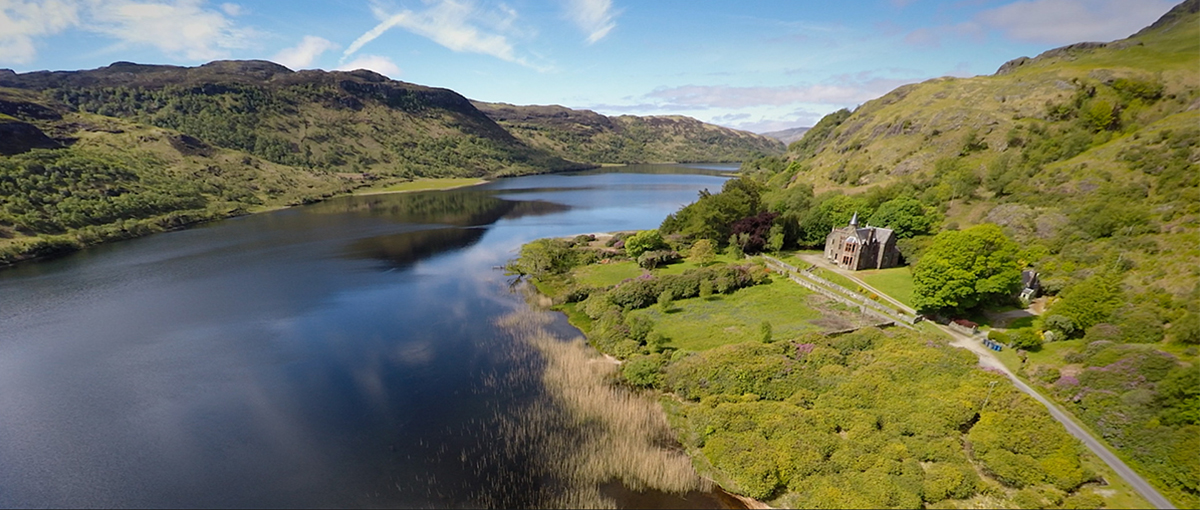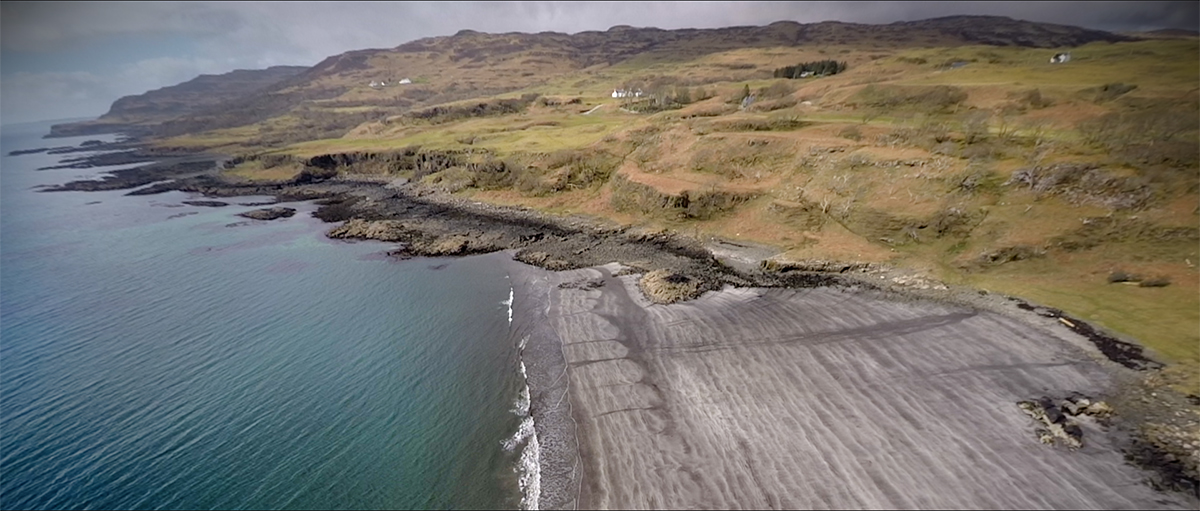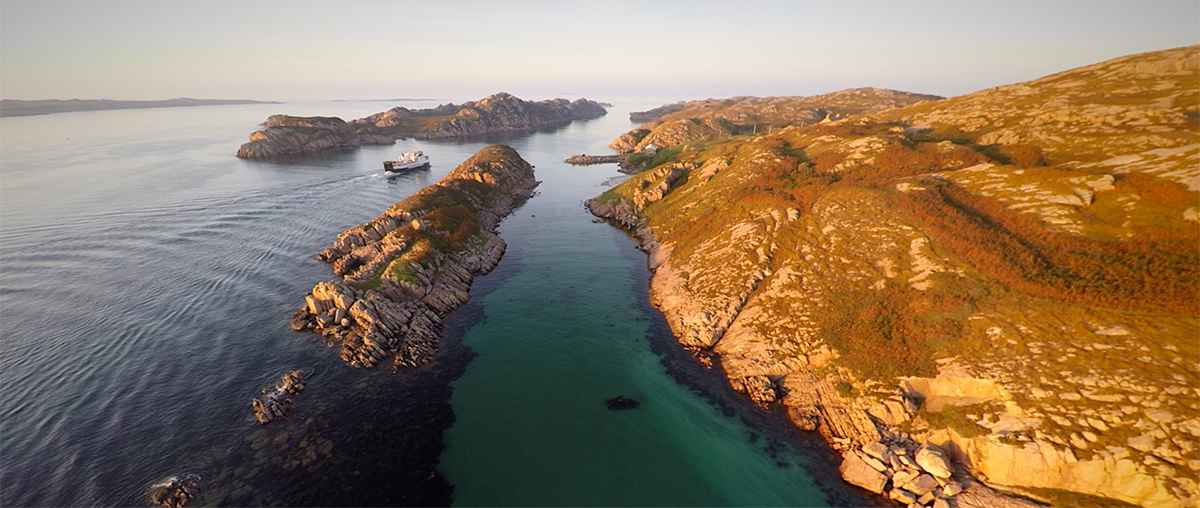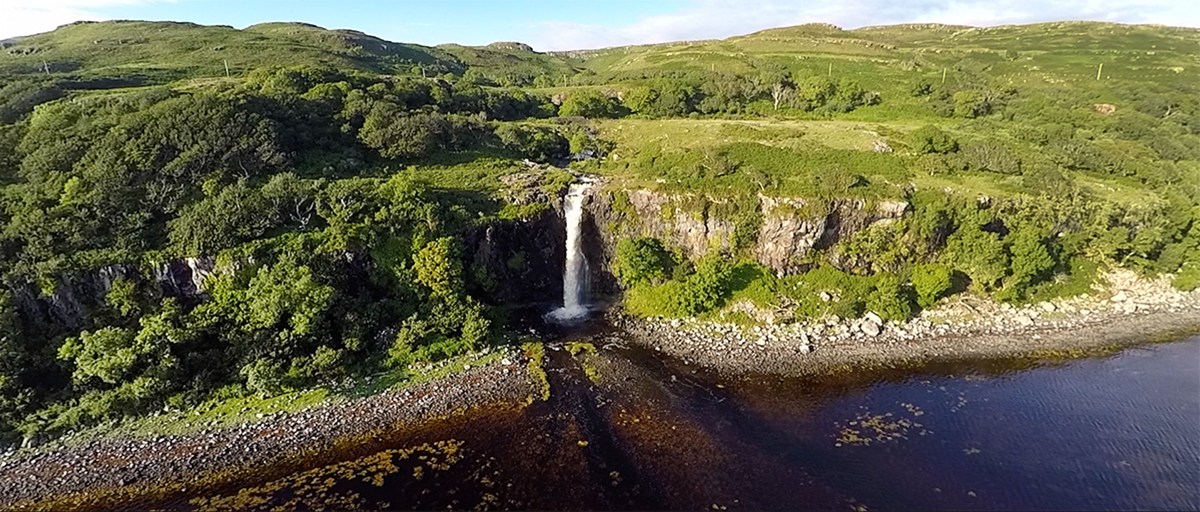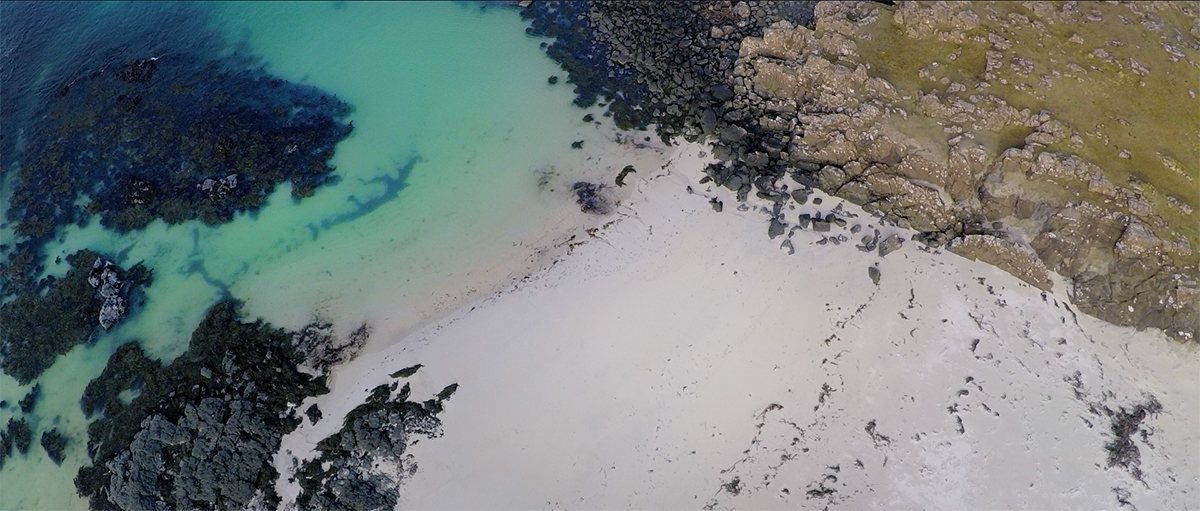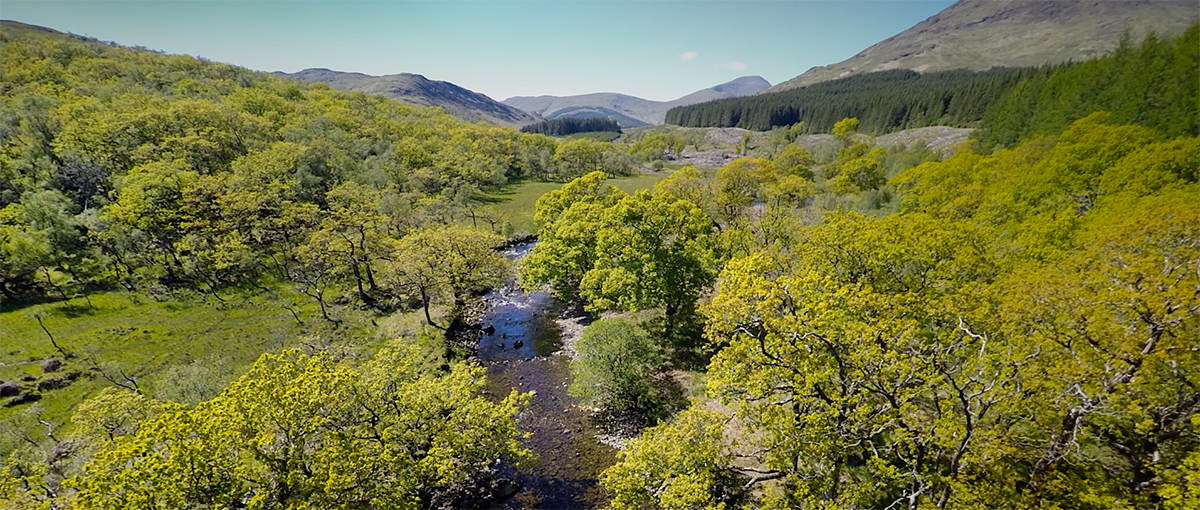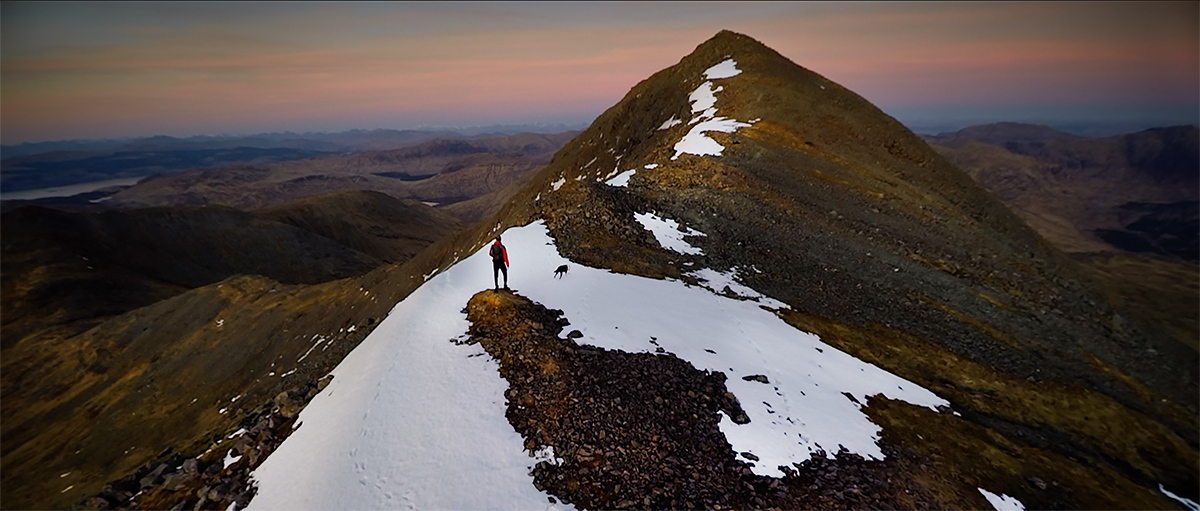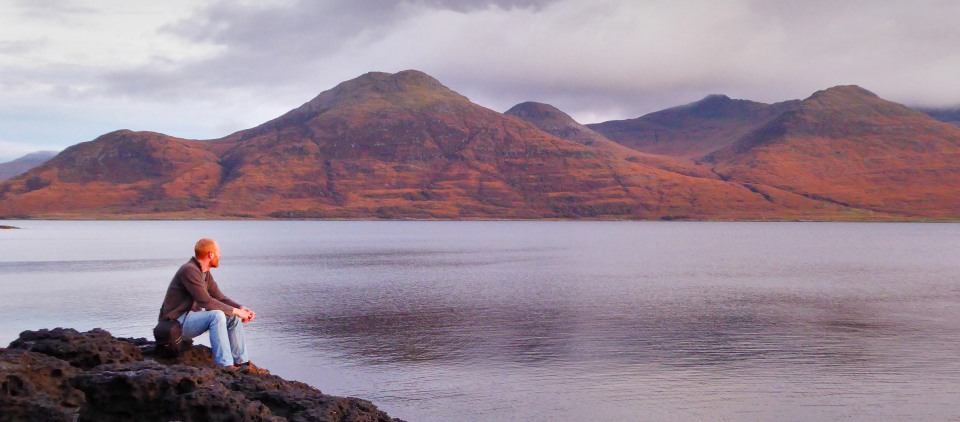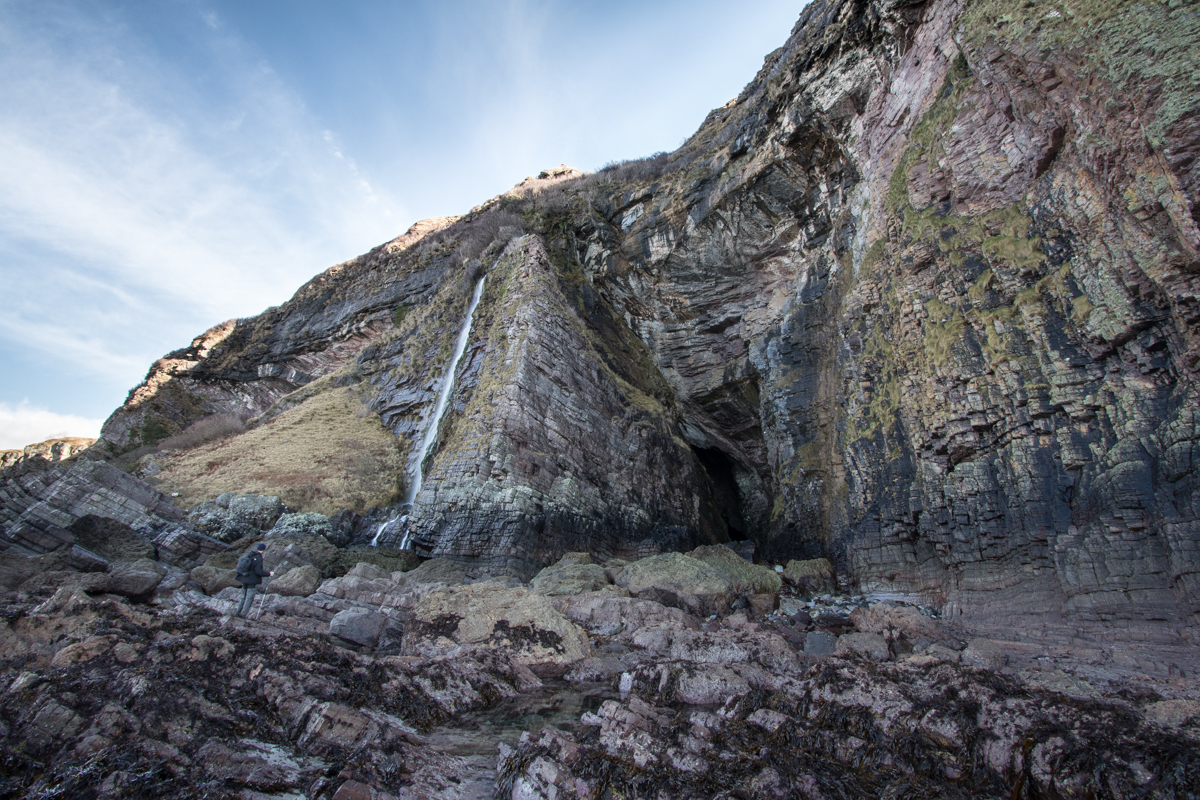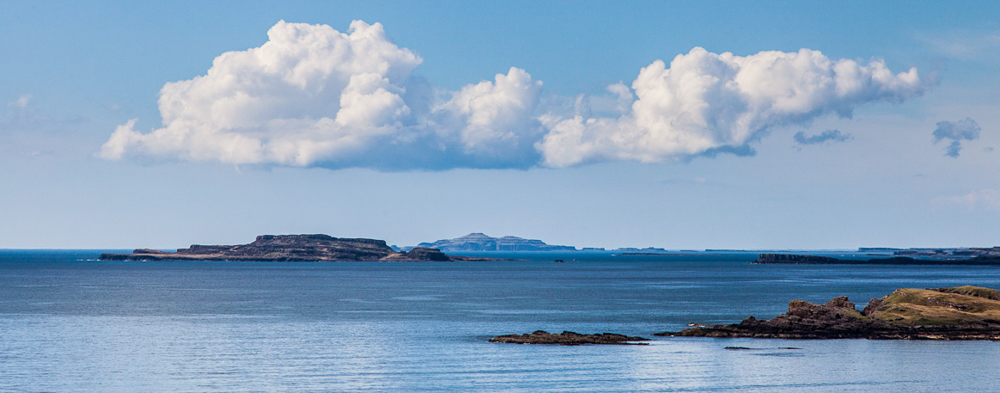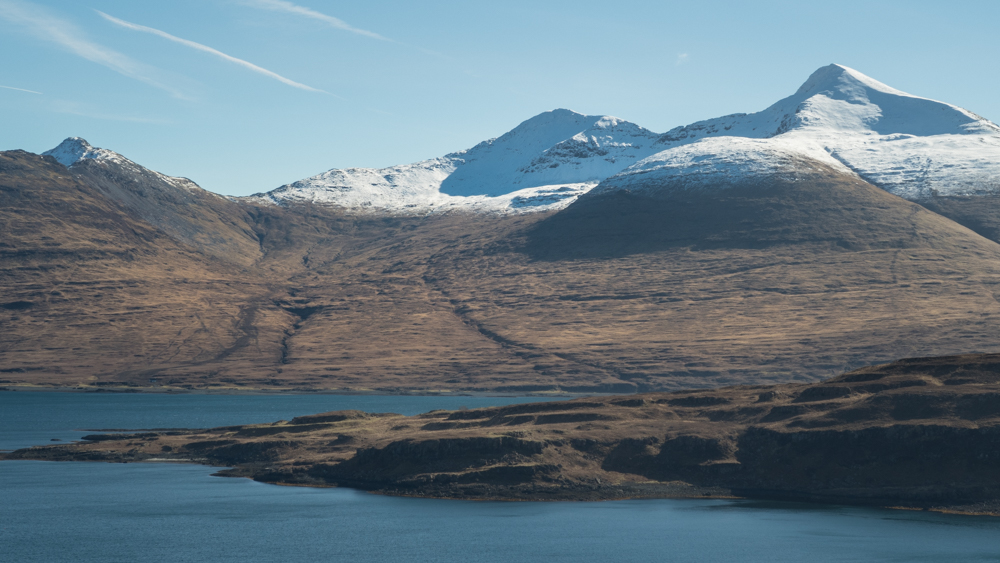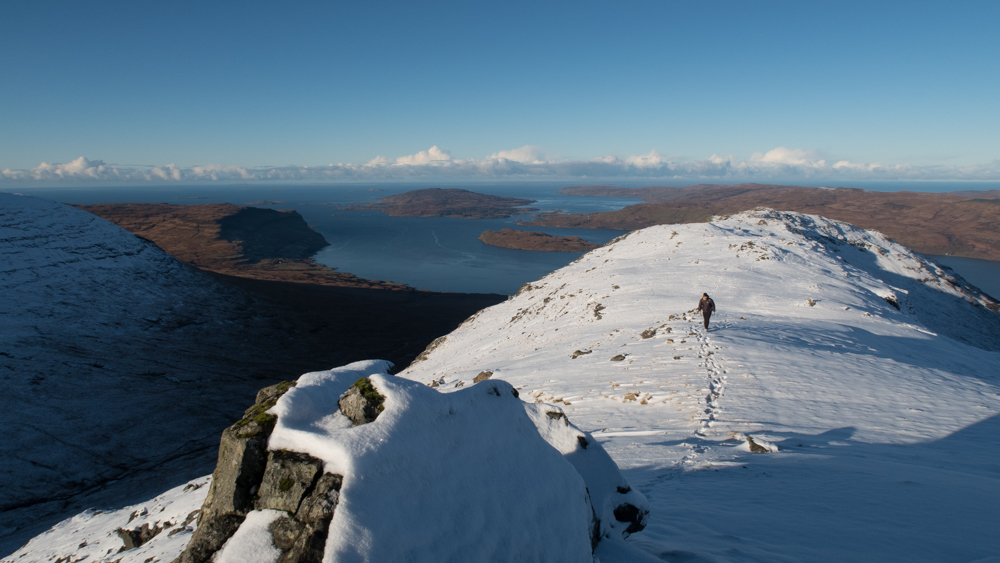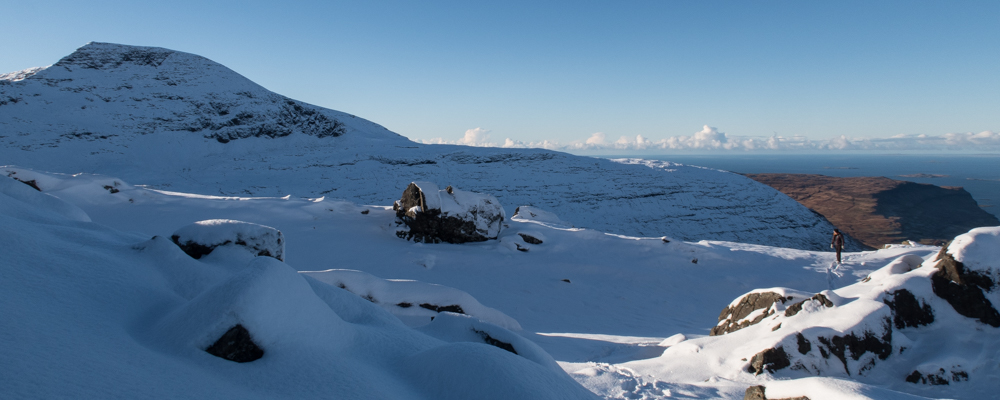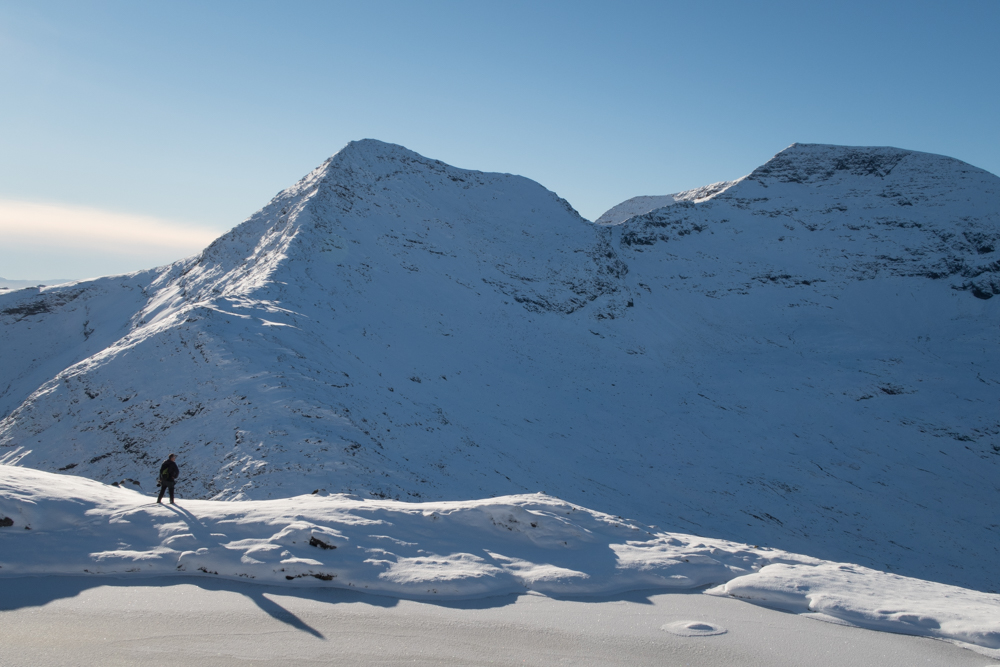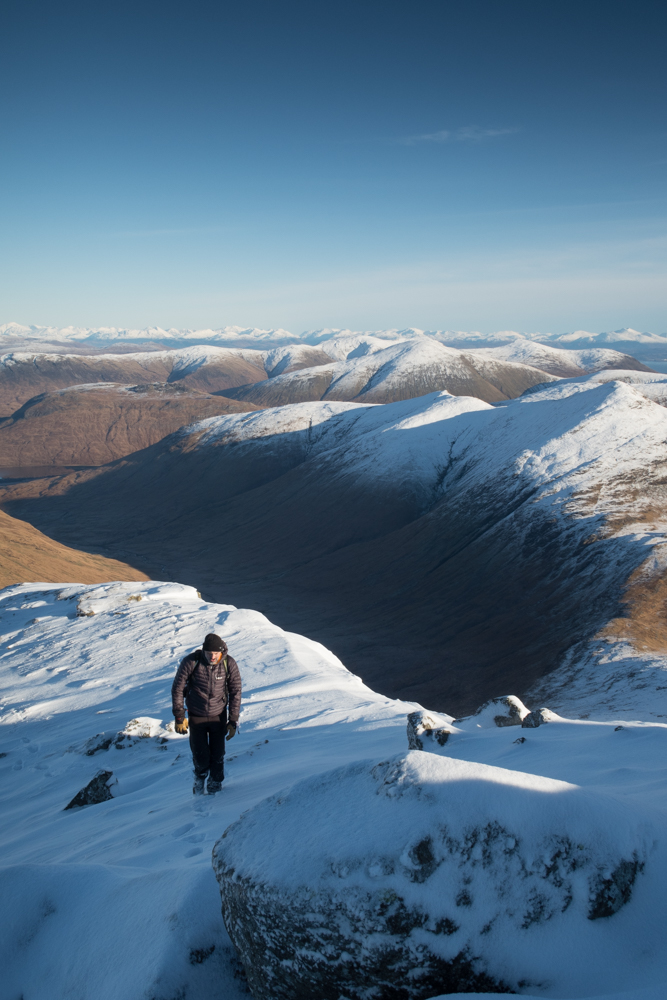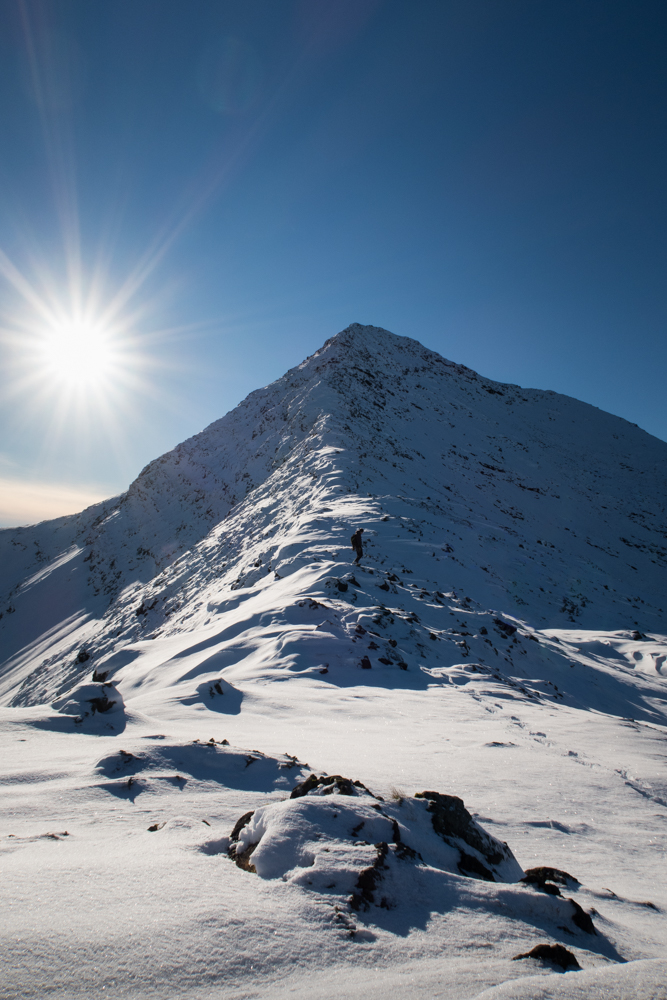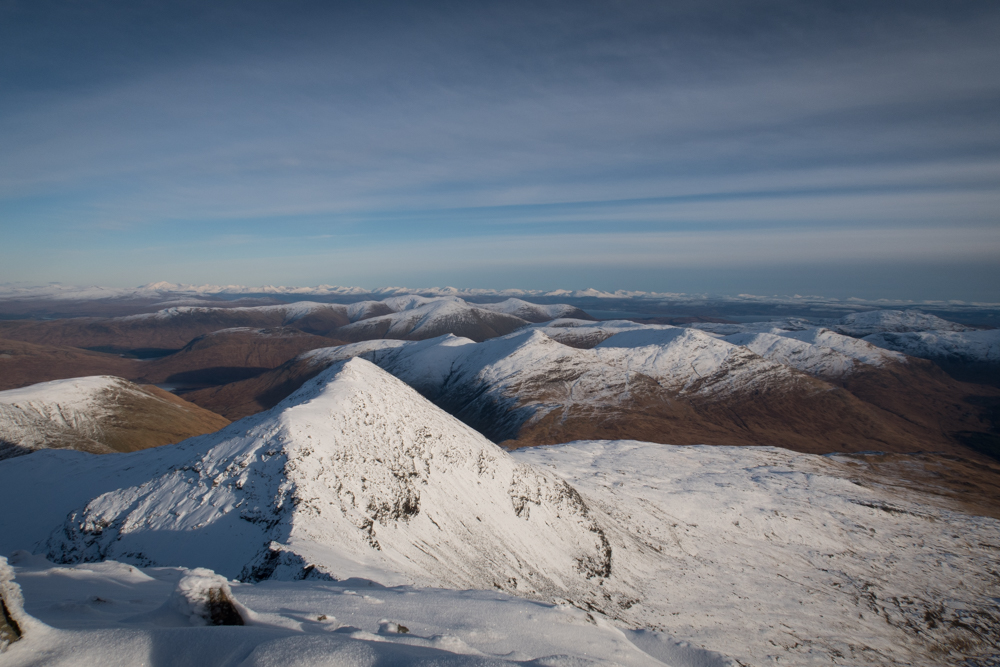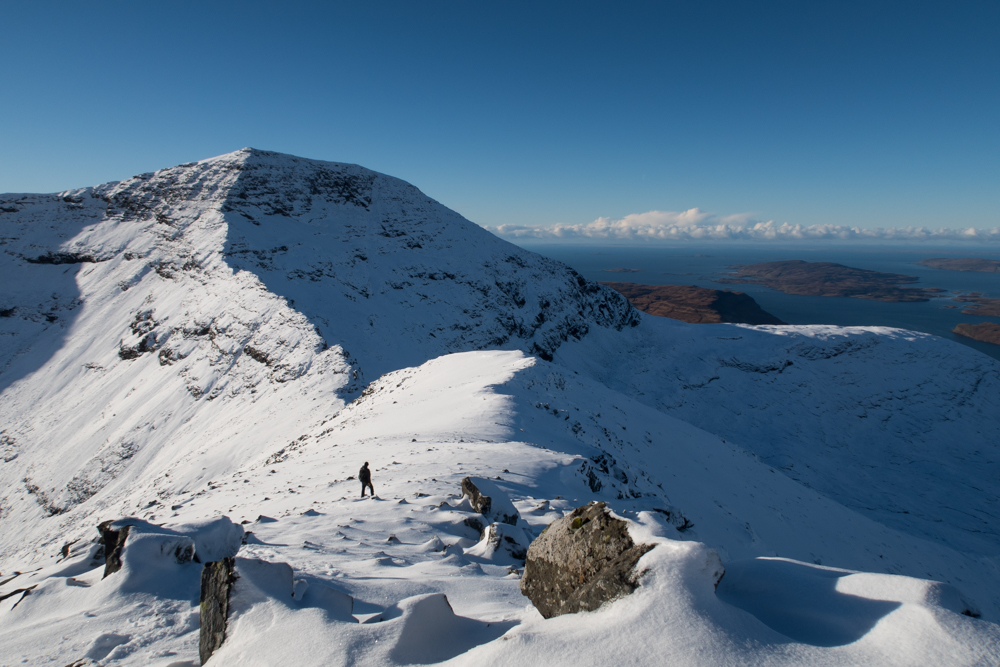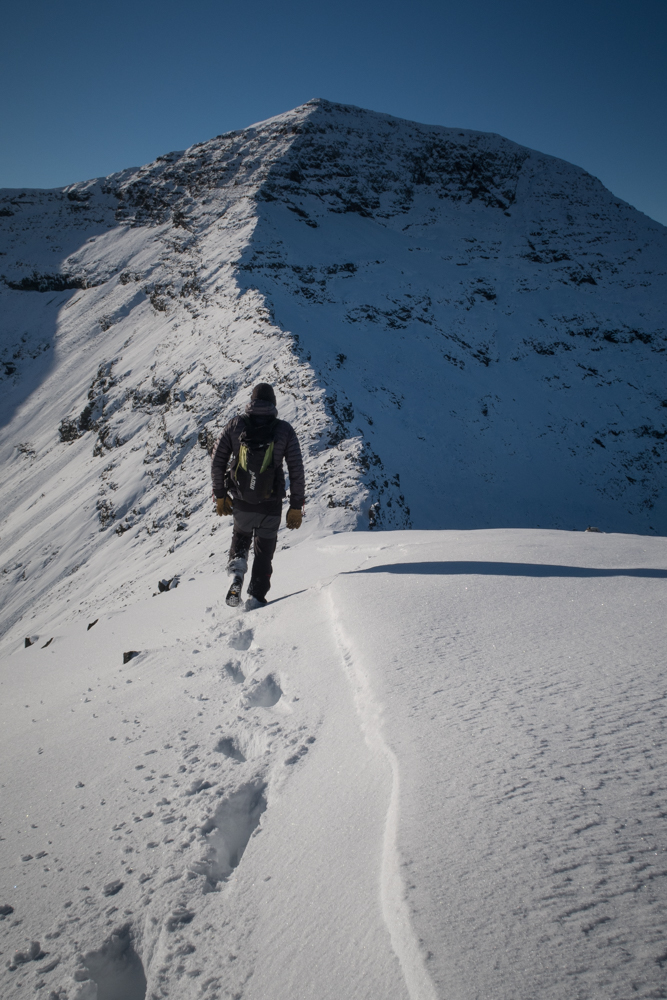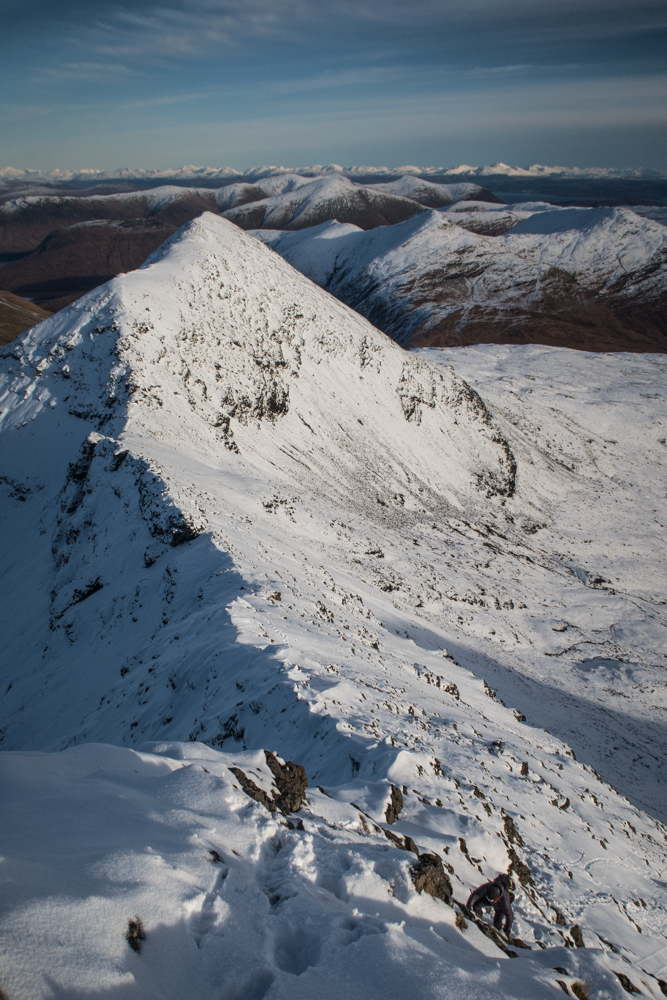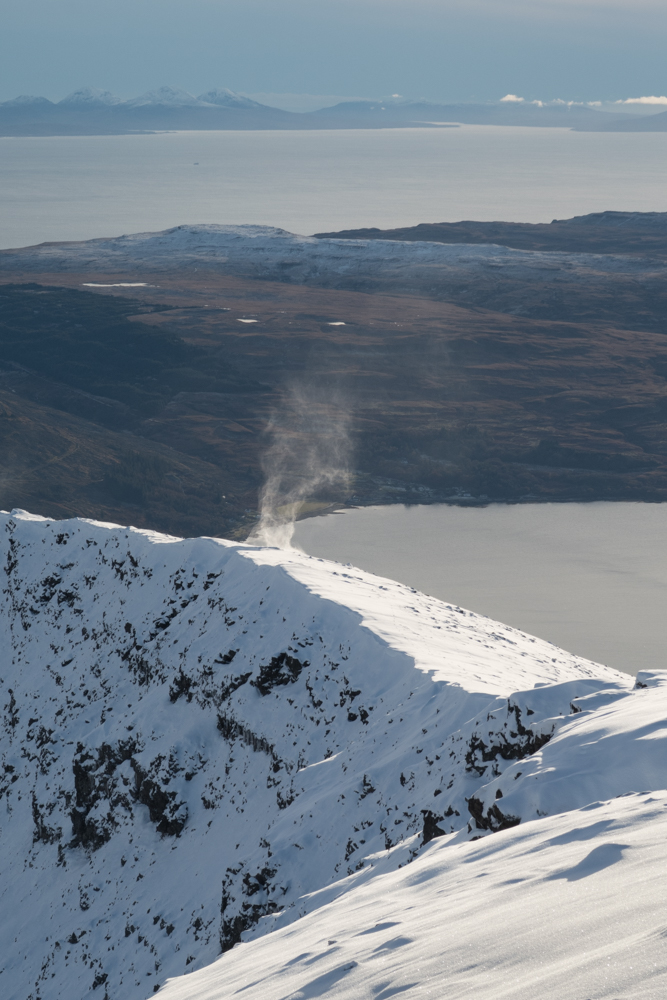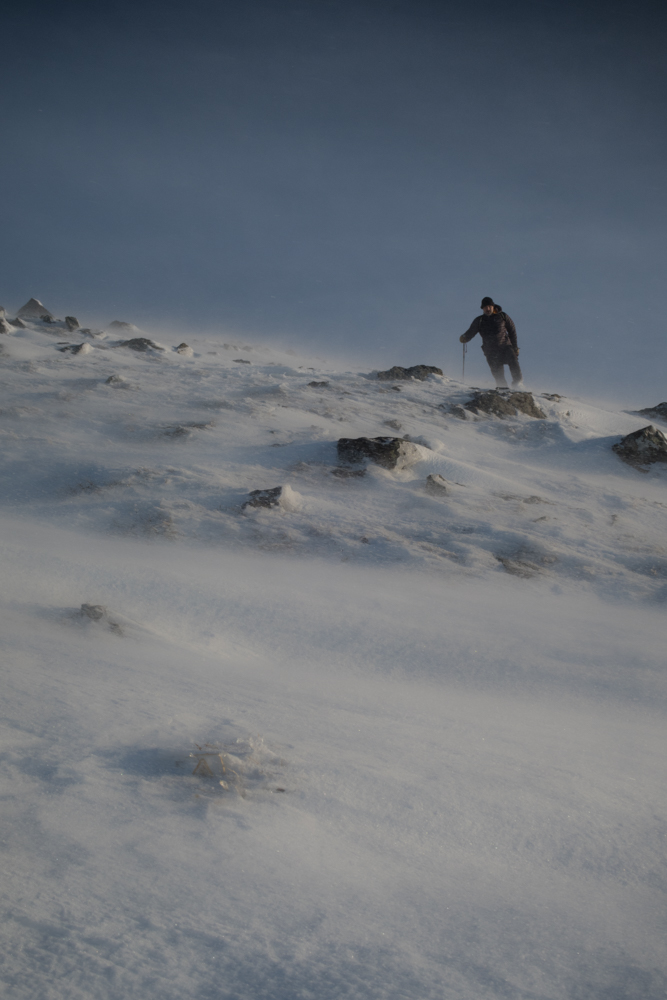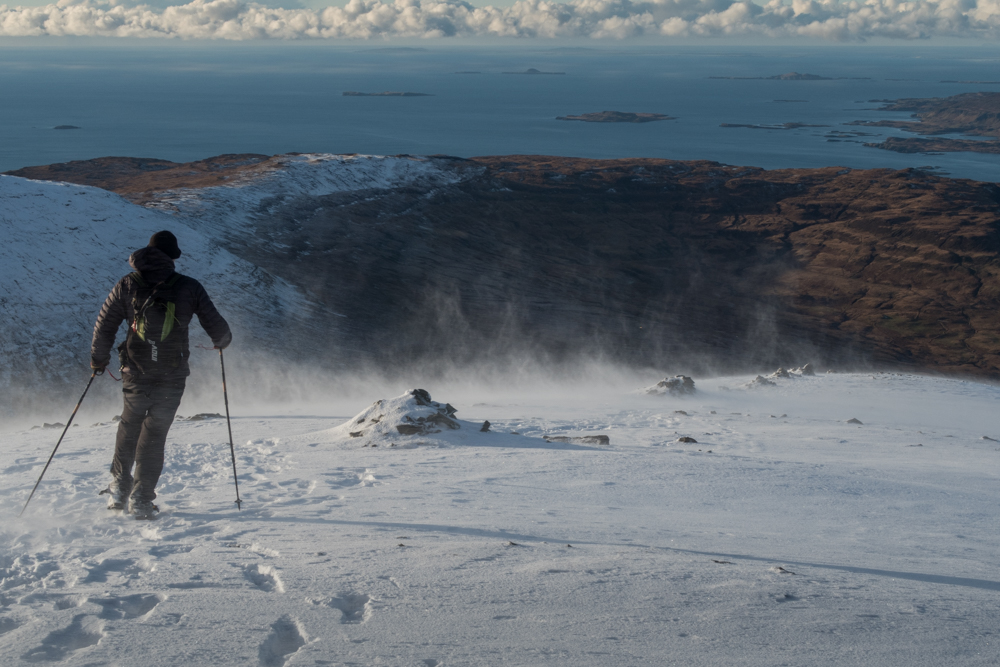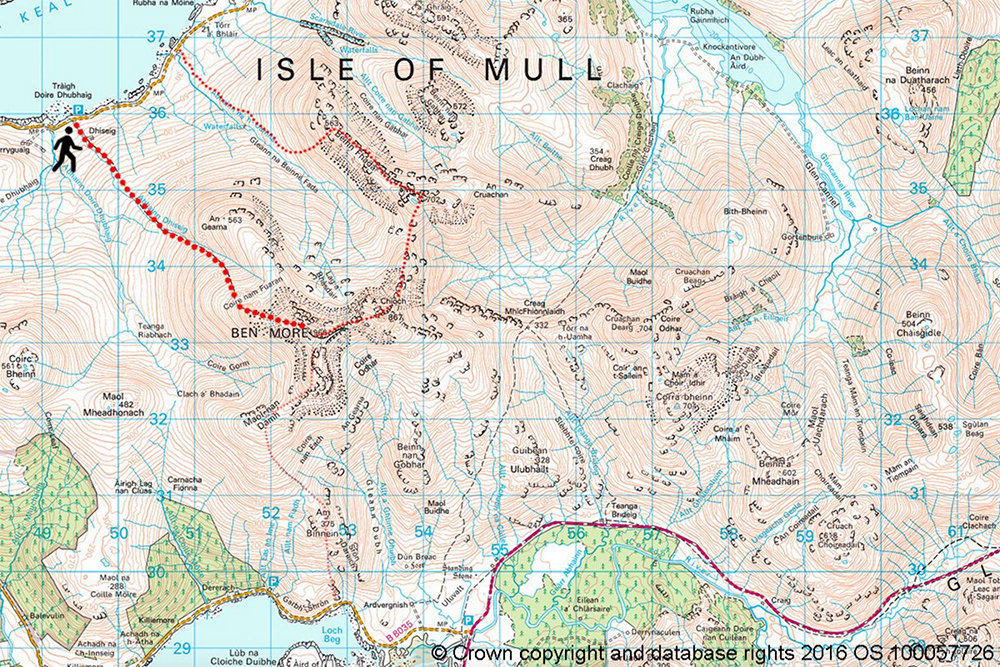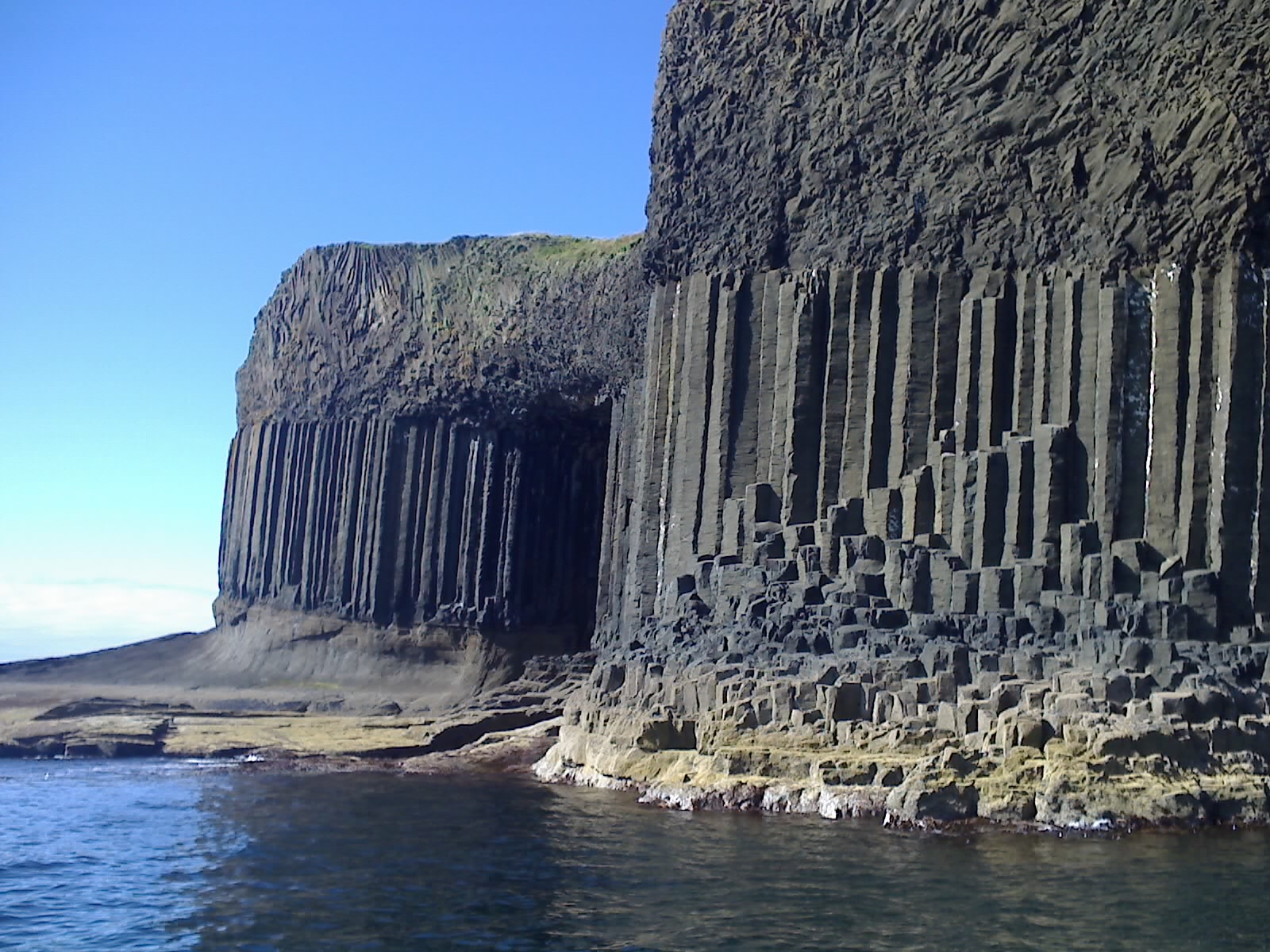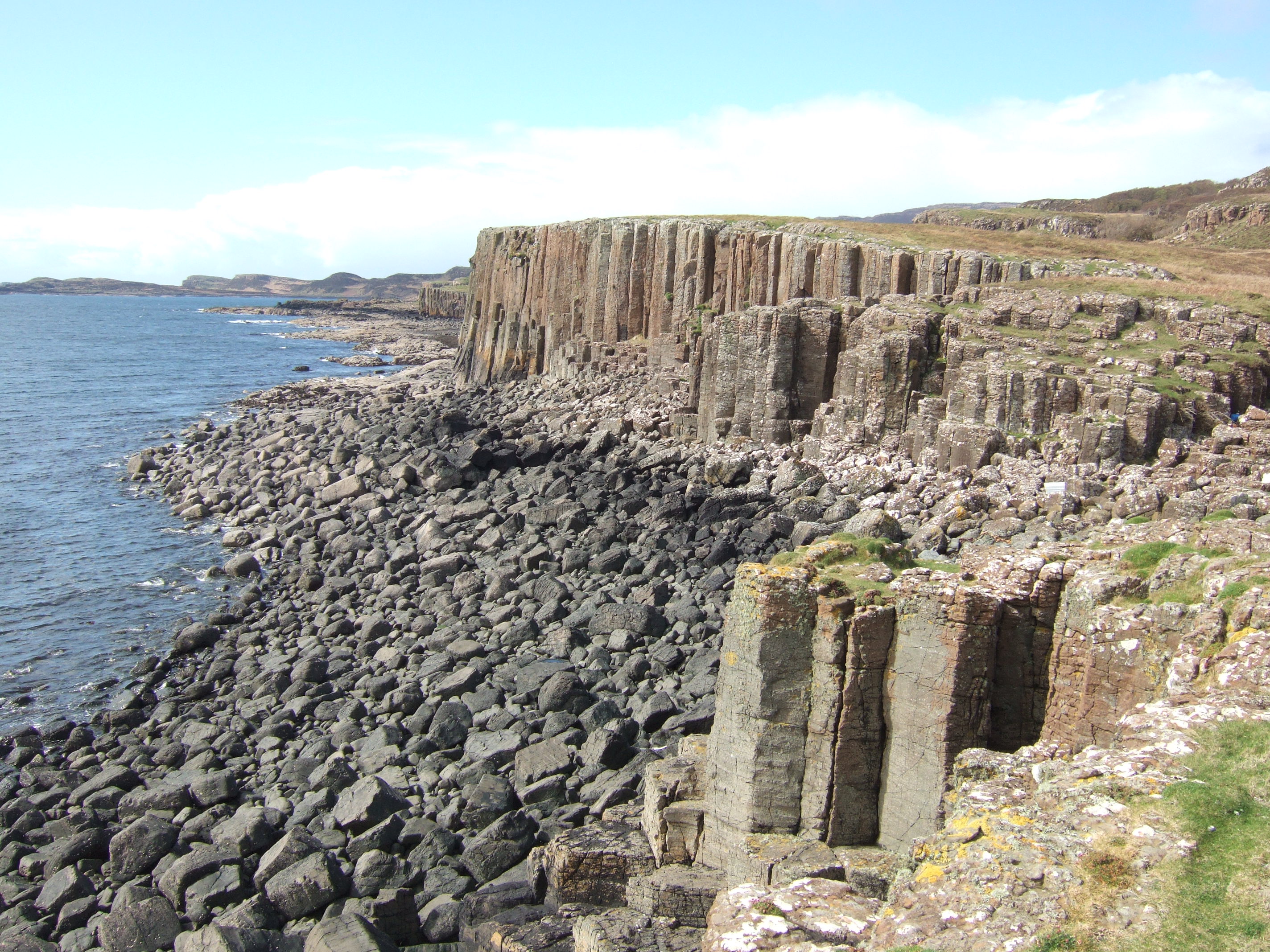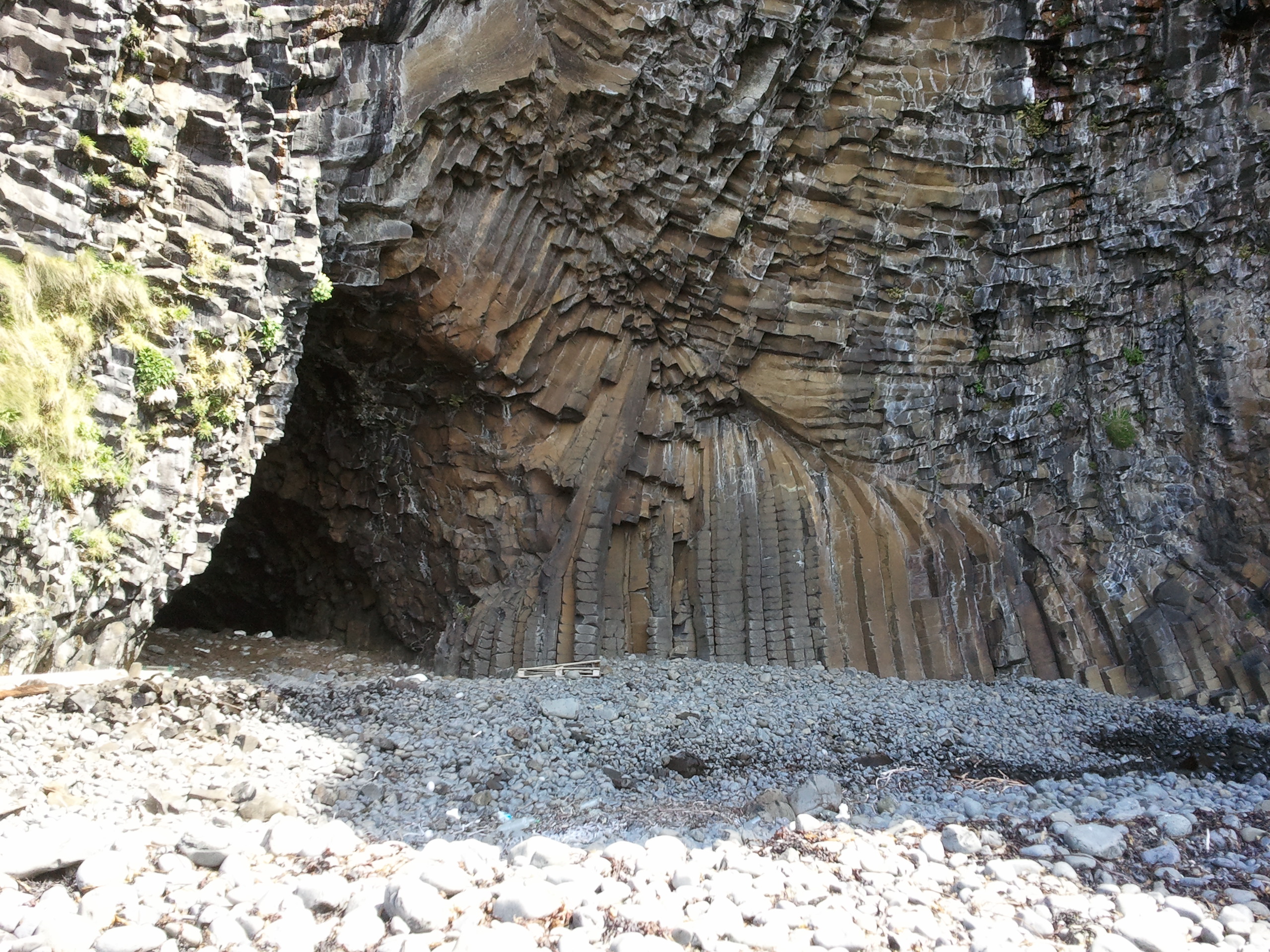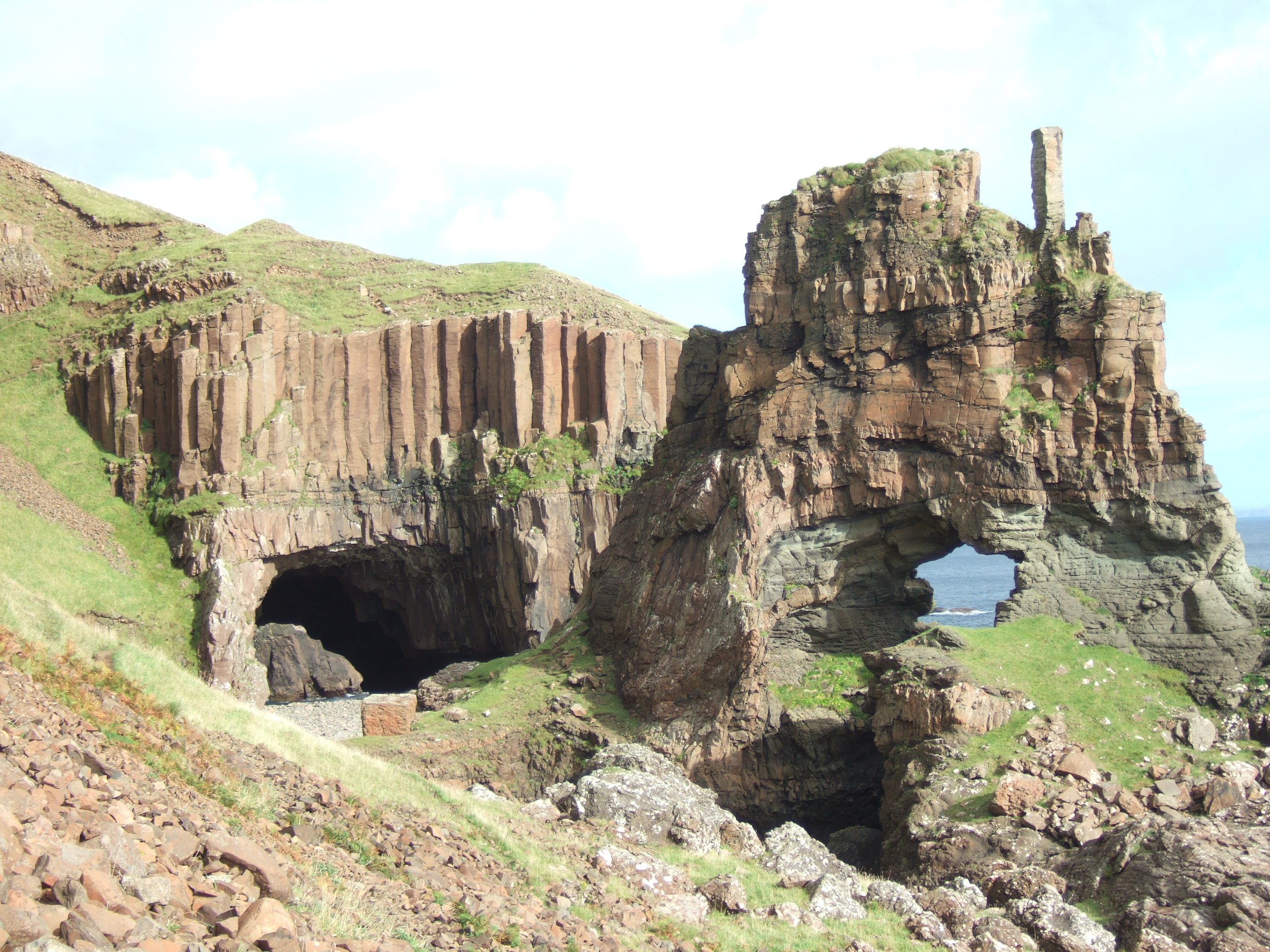Island Hopping: Scottish Islands You Can Visit From Mull
When you arrive in Oban, ready to make the ferry crossing to Mull, you’re bound to hear the west coast town referred to as the ‘Gateway to the Isles’. But Oban isn’t the only place from which you can explore the surrounding Scottish islands. It’s possible to visit several from Mull too. Here’s how to do it.
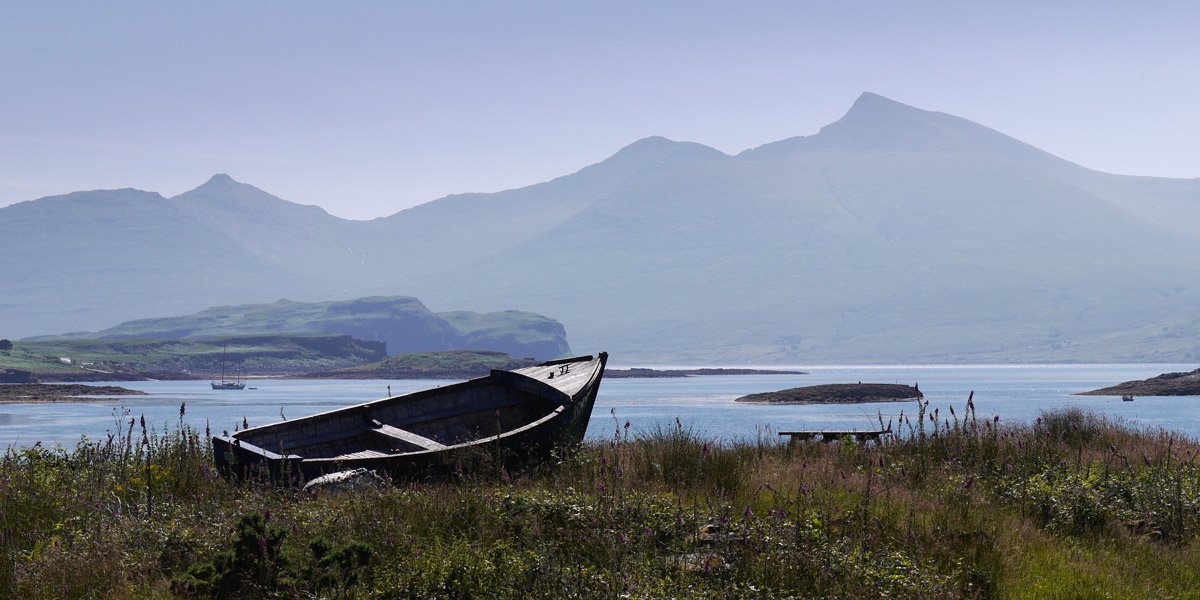
The view from the nearby island of Ulva looking back across to Mull
Iona
Perhaps the most famous of Scottish islands surrounding Mull, Iona has attracted visitors for centuries. In fact, over a thousand years ago in 563AD, St Columba arrived, bringing with him Christian teachings that are still felt on the island to this day.
Iona Abbey dates from the Middle Ages. It is one of the most popular attractions to visit, alongside the 13th-century nunnery and St Oran’s Chapel.
But that’s not all there is to explore on Iona. Three miles long, this wee island is a natural treasure trove waiting for you to discover it. Wildlife enthusiasts flock to hear the elusive corncrakes, while walkers make their way to the island’s highest point, Dun I, or to the beautiful white sand beaches, like the Bay at the Back of the Ocean.
You’ll find Iona just off the south-western tip of Mull. The passenger ferry from Fionnphort takes as little as 15 minutes.
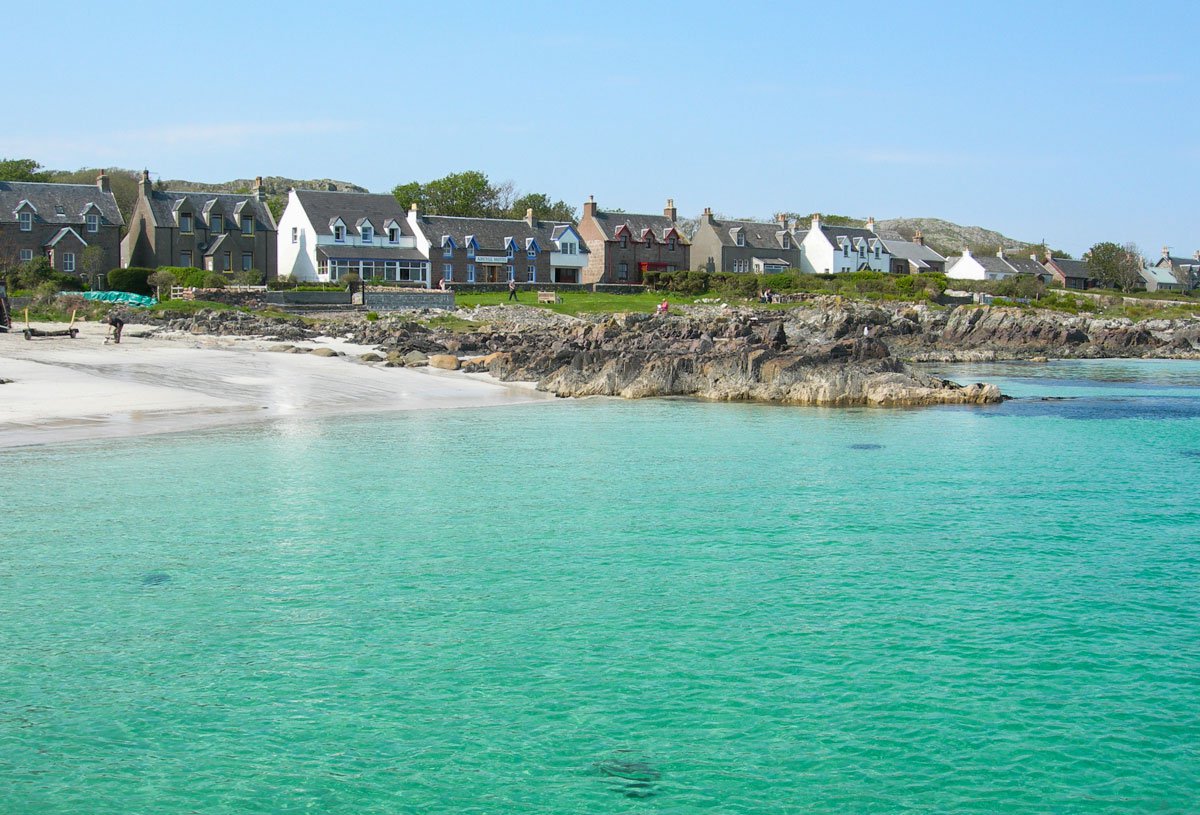
Discover the quaint cottages and charming coastline of Iona
Ulva
Ulva is one of the most accessible of the Scottish islands surrounding Mull. A boat will take you across from the aptly named Ulva Ferry on Mull’s west coast on weekdays, and Sundays between June and August too.
Ulva is a nature-lover’s paradise, with no end of waymarked trails that allow you to explore the island’s diverse scenery. There are rocky shorelines, picturesque woodlands and open countryside to discover. With this range of habitats comes an amazing array of species, with unusual wildflowers to spot, as well as birdlife and mammals.
Much like Iona, Ulva has its own interesting history. Visiting Sheila’s Cottage is a great way to experience what island life was like in the 20th century, before walking to ruined buildings or Livingstone’s Cave.
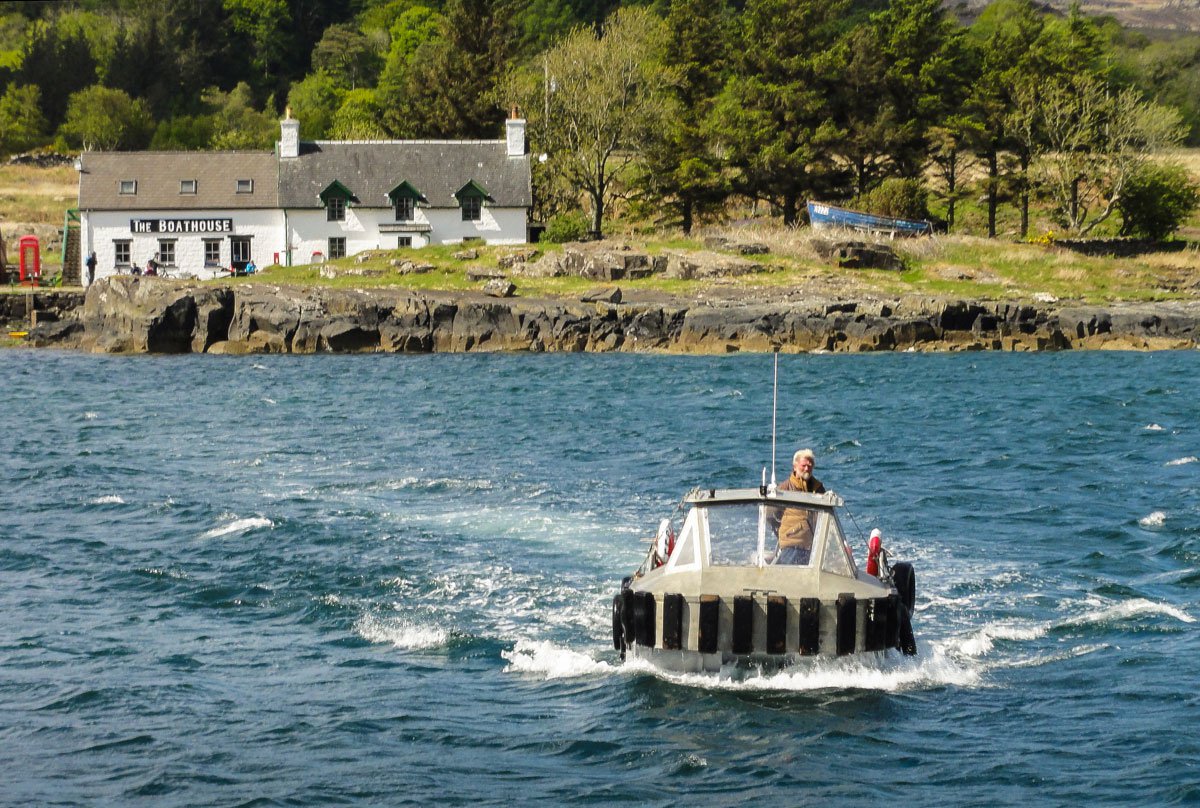
Hop across to Ulva and enjoy woodland walks
Staffa
Many visitors to Mull embark on one of the many boat trips to Staffa for the day. Staffa’s claim to fame is for inspiring the musician Mendelssohn with the acoustics in Fingal’s Cave.
But Staffa is iconic in its own right, with towering basalt columns lapped by foaming blue waters. In the summer months, the puffins arrive, attracting many visitors to the island. But whatever time you choose to visit, you’ll have the chance to spot sea birds. You can also look out for marine species, like dolphins and porpoises, from the boat.
There are a variety of boat trips available to visit Staffa, departing from both Tobermory in the north and Fionnphort in the south. Find out more about boat trips on Mull.
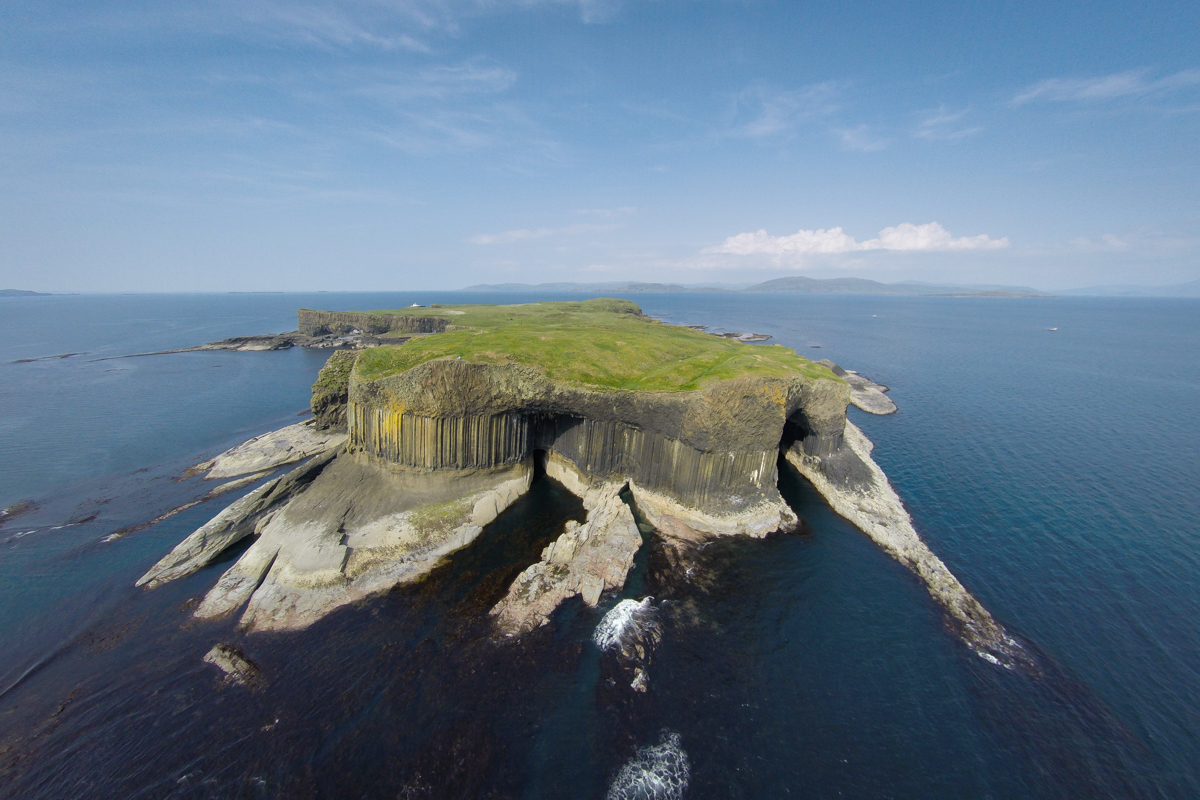
Marvel at the magnificent basalt columns on Staffa
Treshnish Isles
From a vantage point on the north-west of Mull,you’ll spot the silhouette of the Treshnish Isles.
Much like Staffa, several boat trips enable visitors to access this archipelago of Scottish islands, with the opportunity to make landing. Tours typically depart from Tobermory because the islands lie off Mull’s north-western coast.
The Treshnish Isles are a haven for wildlife. Puffins nest here during the summer, before the grey seals have their pups in autumn.
Boat trips tend to land on the largest of the islands, Lunga. Once off the boat, you can cross the rocky beach to explore the island and see the puffins, taking care not to disturb any nests.
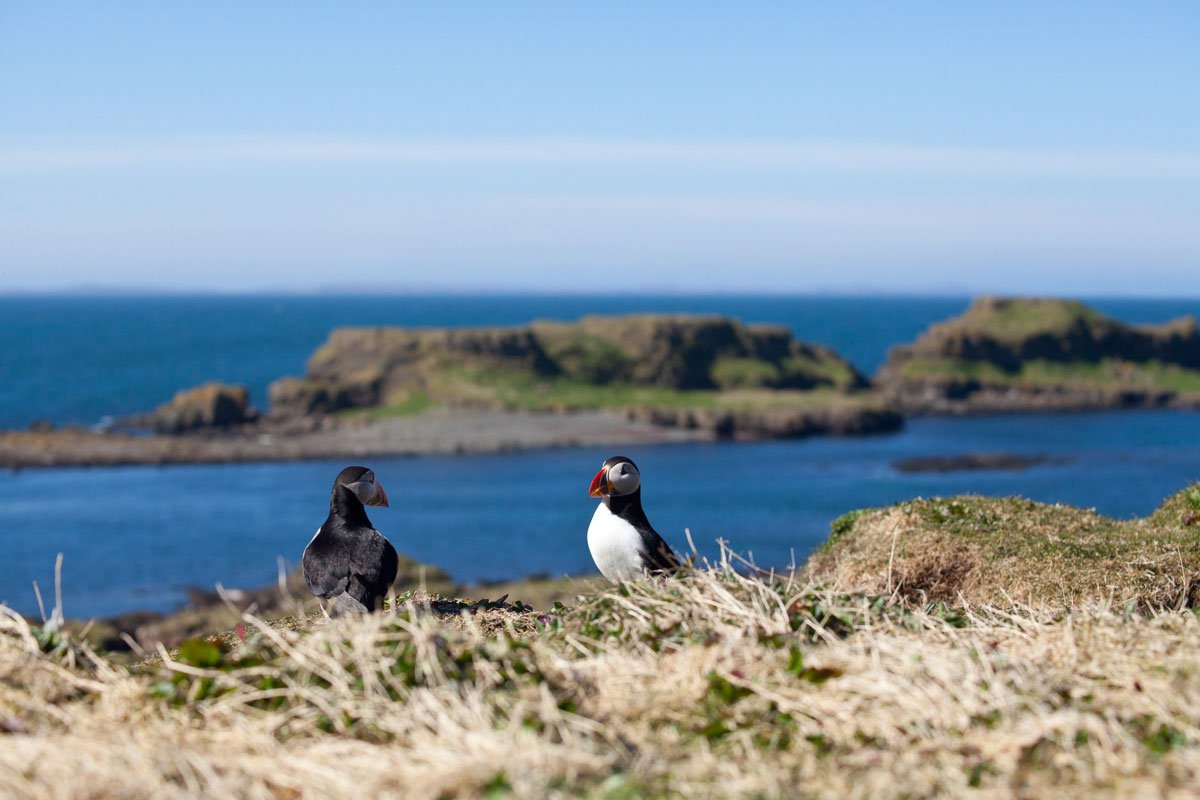
Meet puffins on the Treshnish Isles during the summer months
Erraid
Erraid lies just off the south-west coast of Mull and while it’s not well known, it is easy to reach if you time it right. Boats can anchor in Tinker’s Hole while visitors can cross over the tidal sandbar on foot when the tide allows.
Small but beautifully formed, visitors will be blown away by the views, from white sand beaches and pink granite outcrops, to the panorama back across to the Ross of Mull.
There are many walking trails that make exploring the island relatively simple. Just remember to check the tides and cross back before the waves cut you off!
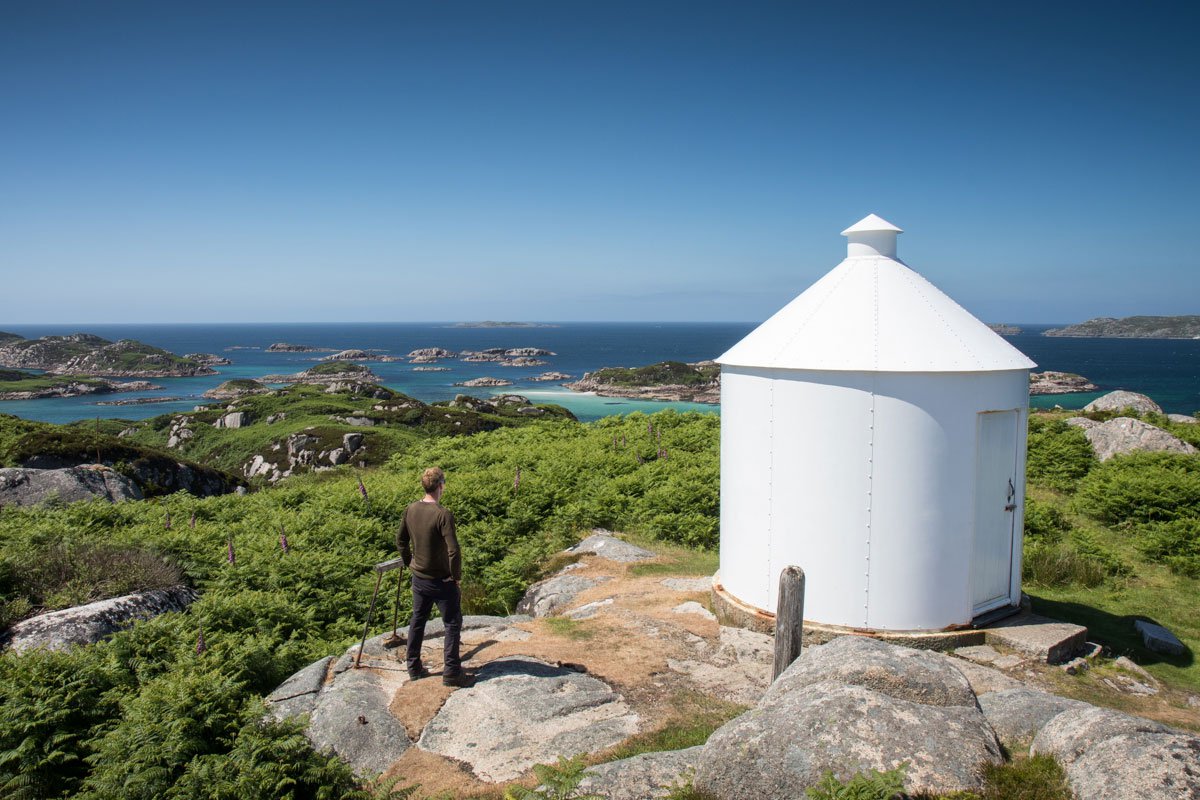
The tidal Isle of Erraid lies off Mull’s south west coast
Gometra
One of the lesser known Scottish islands on Mull’s west coast is Gometra, perhaps because it is one of the trickiest to reach. But if you fancy an adventure, a few days on Gometra could make a unique extension to a week on Mull.
You reach Gometra by first taking the boat from Mull to Ulva, then walking a challenging eight miles over hills to reach the bridge to Gometra. The route is as rugged as the landscape and is best tackled only by experienced walkers.
This isolated isle is home to just a handful of islanders and runs off the electricity grid. It’s a true wilderness, with both the challenges and beauties that come with it. Few will discover Gometra first hand, making it a hidden gem for those who do tackle the journey.
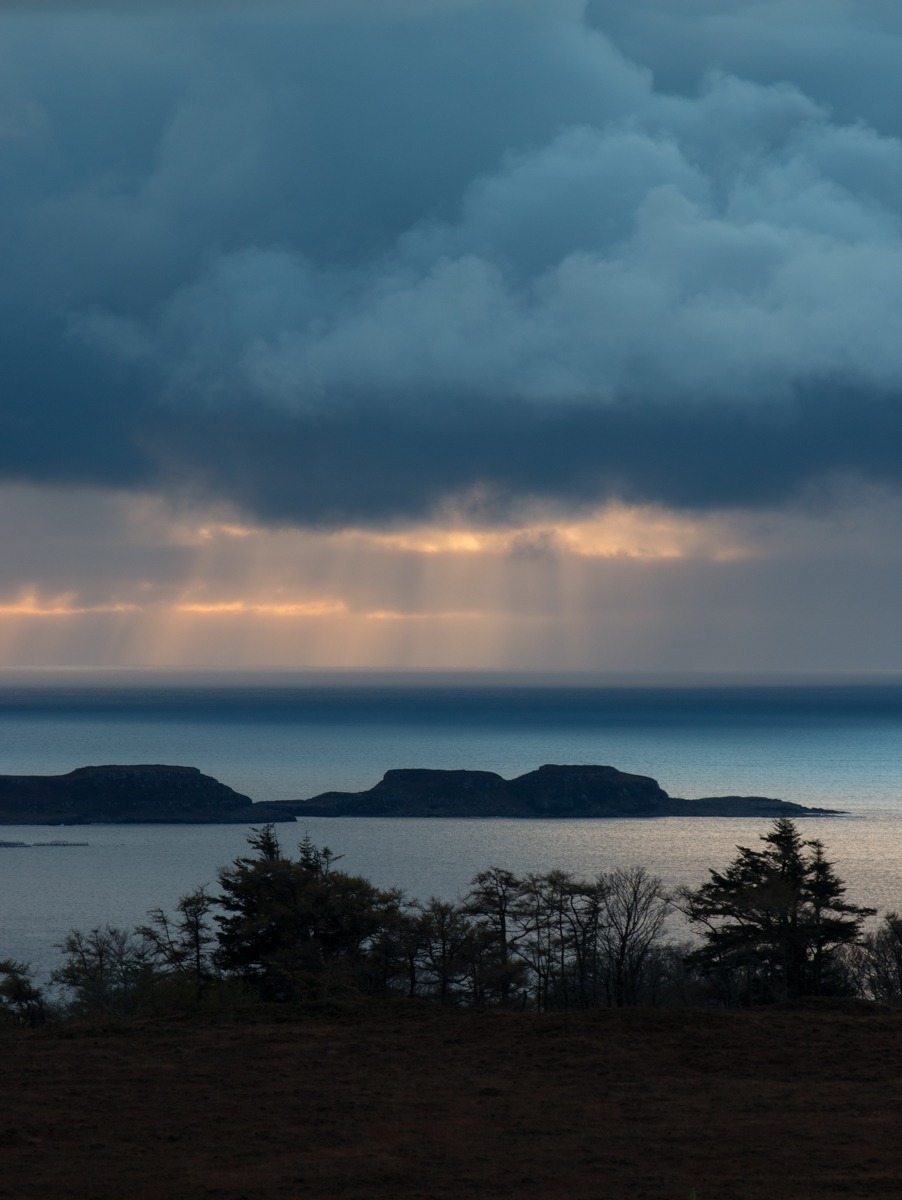
The view to Gometra from Mull
Find out more about visiting Mull’s outlying islands and plan your next holiday with our helpful island guide.

